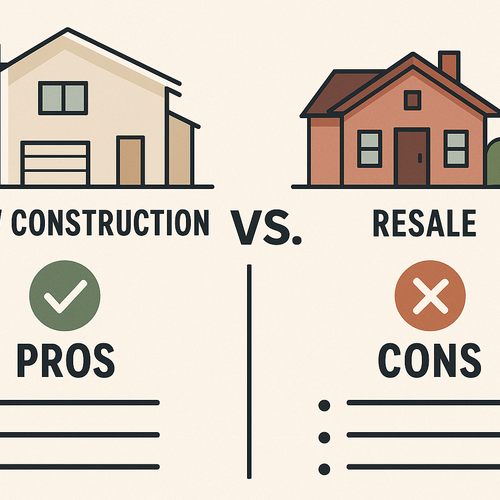
Price and Inventory Differences
Texas is a non-disclosure state, so we can’t publish every closed sale, but we can look at active/coming-soon inventory, list-price medians, and price-per-square-foot patterns. In general, Sharyland-zoned homes tend to show higher average list prices and higher $/SF than homes in many Mission CISD zones at the same time. That doesn’t mean Mission CISD homes don’t sell — it means the Mission CISD side usually offers a wider range of prices and more entry-level or value-driven options. Sharyland areas sometimes have leaner inventory; when supply is tight, list prices hold. When either side gets more inventory, buyers immediately gain leverage and you’ll see more price adjustments.Days on Market and Demand
Because demand is often stronger in higher-perceived districts, Sharyland listings in good condition can sell faster than similar homes across town. On the Mission CISD side, we’ve seen slightly longer average DOM in some segments — which tracks with what we’re seeing across the RGV as the market cools from 2021–2022 highs. Remember, though: both districts are inside the same regional market. The Valley as a whole has longer DOM than the peak years, and even inside Sharyland, it’s segmented. Newer, move-in-ready, or master-planned homes will move first; dated or overpriced homes will sit, no matter the district.Recent Market Context (Dynamic)
Over the last 6–12 months, Mission CISD has generally trended up with seasonality — more inventory, more price variety, and buyers reacting to mortgage rates. Sharyland has looked a little more split: entry/mid-level homes in Alton, Palmhurst, or South Mission can sit in one price band, while the more established Sharyland pockets closer to McAllen post higher list medians. Because this is all moving data — rates, jobs, school accountability updates — treat this as a current snapshot, not a forever rule. Before you write an offer or set a list price, pull the fresh numbers.What This Means for Buyers
If you must be in Sharyland ISD for program reasons, sports, or overall scores, expect to pay a bit more or act a bit faster. That’s the tradeoff for higher demand. If you’re more budget-sensitive, Mission CISD can open up more houses in the same size range, sometimes in locations that are better for your commute. Plenty of buyers choose Mission CISD, save money on the purchase, and reinvest in upgrades.What This Means for Sellers
Sharyland sellers do have a marketing edge — “Sharyland ISD” in the headline will pull more eyeballs. But it is not a blank check. You still have to price to today’s market, go photo-ready, and watch feedback in the first 2–3 weeks. If showings are light, adjust. Mission CISD sellers can win by leaning into value (bigger home for the money), recent district improvements, and great presentation. Stage it, light it, and price inside popular search bands (for example, stay at $299,900 instead of $305,000).Practical Tips for Comparing the Two
- Ask for a hyper-local CMA: same size, similar age, same condition — one in Sharyland, one in Mission CISD — for the last 6–12 months.
- Stack the full monthly: principal/interest + taxes + insurance + HOA + utilities. Newer Sharyland homes can win on utilities; Mission CISD can win on purchase price.
- Drive both areas: check school drop-off, afternoon traffic, and how close you are to parks, sports, shopping, and the expressway.
- Rate strategy: if payment is tight, ask for seller credits or a 2-1 buydown — works in both districts.
- Re-check before offering: inventory can change week to week and so can DOM.
Bottom Line
Both Sharyland ISD and Mission CISD serve our community and shape buyer behavior — just in slightly different ways. Sharyland often carries a premium and can move faster; Mission CISD often gives you more house for the money. The “right” district is the one that fits your budget, timeline, and what you want for your kids.Want a side-by-side report with live listings and DOM in both districts? Book a strategy call • martinezrgvhomes.com • m: 956-476-2925 ✨ Experience the Martinez Difference! ✨




